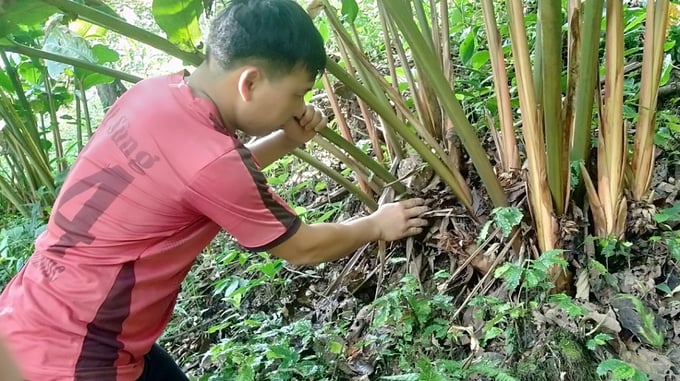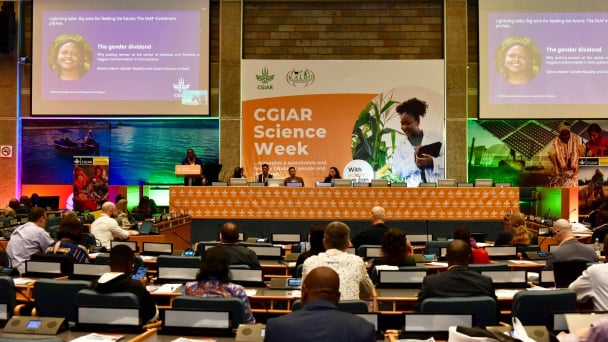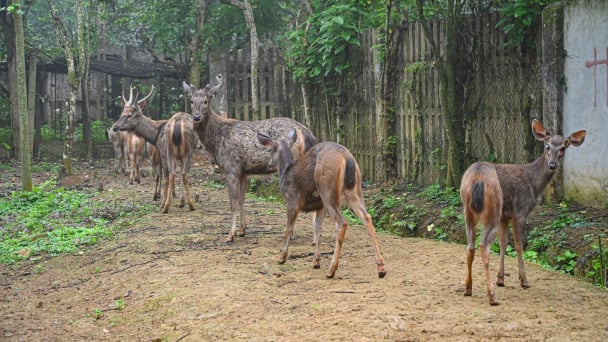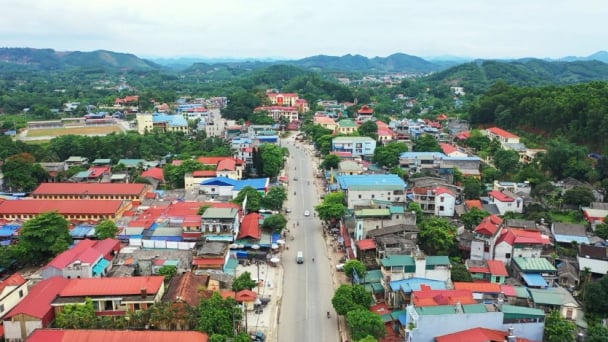April 15, 2025 | 21:01 GMT +7
April 15, 2025 | 21:01 GMT +7
Hotline: 0913.378.918
April 15, 2025 | 21:01 GMT +7
Hotline: 0913.378.918

The lost black cardamom harvest season has brought increased hardship to the lives of people in the highland regions. Photo: Q.C.
Khun Ha commune, located in Tam Duong district, Lai Chau province, dedicates a considerable amount of land to the cultivation of black cardamom. However, due to prolonged and intense heat as well as the dry weather during the crucial flowering period, numerous black cardamom cultivation areas have suffered from severe drought.
The harvest of black cardamom witnessed a substantial reduction in 2023, resulting in a considerable loss of income for farmers in the highlands. Their prospects and expectations pertaining to the income generated from the cultivation of black cardamom have been dissipated.
Mr. Sung A Di, a farmer in the Ma Sao Phin Thap village, Khun Ha commune, has been enjoying a stable income from the cultivation of black cardamom for over ten years. After each harvest, his family typically earns approximately 70 to 80 million VND from the sale of dried black cardamom. This income level can cover various household expenses, including household item purchases, home repairs, and dealing with unforeseen financial matters.
"We normally harvest around 22 bags of dried black cardamom every year. However, due to excessive amount of sunlight this year, both the flowers and the plants have either dried up or died. As a result, our family has only harvested less than one-third of the yield from the previous year, which is equivalent to six bags, or approximately 21 million VND," Mr. Sung A Di explained.
The lives of highland farmers, typically characterized by extreme adversities, have been further compounded due to the sharp decline in their primary source of income.
Similar to several other households, Mr. Sung A Giang's family in the Ma Sao Phin Thap village has a long tradition of black cardamom cultivation. The steady income from this type of fruit has contributed to a relatively stable life for the family. In addition to growing vegetables and raising pigs and chickens, income from the sale of black cardamom has provided the family with financial relief for daily expenses.
"We could reliably generate income from black cardamom in the past. However, due to the withering flowers and sporadically scattered fruit this year, we have only harvested approximately 3 tons of dried black cardamom. Despite the rapidly rising prices of black cardamom, our losses amount to at least 50 to 60 million VND. The loss of the crop has heavily affected local residents," Mr. Sung A Giang lamented.
According to a black cardamom trader, the price of dried black cardamom has surged nearly threefold within a short amount of time, from 25 million VND per ton to 75-80 million VND per ton. However, following the news regarding the potential export of black cardamom via sea routes from Hai Phong Port to Ngoc Lam Port in China, the price of this commodity has reached 97 to 98 million VND per ton within the last four to five days.
The escalation in the price of dried black cardamom has been caused by the low harvest yield as well as crop loss. However, despite the purchasing price reaching 130 million VND per ton in the past, the fruit remained unsuitable for export. Moreover, numerous Vietnamese traders still possess considerable stockpiles of black cardamom.
According to experts, black cardamom has been categorized as a medicinal ingredient since the issuance of Circular No. 48/2018/TT-BYT dated December 28, 2018, by the Ministry of Health. This classification has complicated the export of this product to China via land routes. Namely, as a medicinal ingredient, Black cardamom is required to fulfill numerous criteria, including the need for a production unit code, to be eligible for export.
Furthermore, the hot and humid weather poses substantial challenge to the preservation of dried black cardamom. The costs associated with mold prevention are substantial, especially in regards to high-capacity storage facilities. Exporting subpar goods with mold can cause substantial losses for businesses.
According to statistics, there are over 420 hectares of black cardamom cultivation area in Khun Ha commune. Every year, the commune harvests over 100 tons of dried black cardamom for a total value ranging from 7 to 10 billion VND, depending on market prices.
However, the harvest yield is significantly lower in 2023 due to the crop loss. The high purchase prices are unable to compensate for the loss of quantity. It is estimated that the amount of income lost by local farmers due to the crop failure reaches billions of VND. The livelihoods of many households in the area will face increasing hardship due to their reliance on the crop.
Mr. Vang Pao Ly, Vice Chairman of Khun Ha Commune People's Committee in Tam Duong district, Lai Chau province, explained that the prolonged hot and dry weather has caused both the flowers and plants to wither, resulting in a lower total harvest area compared to that of previous years. Many local households primarily depend on black cardamom for their income. In addition, the commune's poverty reduction and hunger alleviation efforts will be affected.
The local governments have been actively promoting and encouraging local farmers to diversify their income sources by raising livestock, growing different crops, and convert unproductive land to tea and passion fruit cultivation.
Tam Duong district has one of the largest black cardamom cultivation areas in Lai Chau province, at nearly 1,530 hectares with a yield of 383 tons. Accordingly, these areas are mainly concentrated in the communes of Khun Ha and Binh Lu.
Translated by Nguyen Hai Long

(VAN) The CGIAR’s Sustainable Animal and Aquatic Foods (SAAF) program represents a new approach that emphasizes the transformation of food systems toward sustainability.

(VAN) Scientists assume that industrial agriculture has been 'outdated.' As a result, a comprehensive overhaul or a revolution in the direction of embracing ecological agriculture is needed.

(VAN) The results from pilot fields are catalyzing the expansion of the One million hectares of high-quality, low-emission rice project in Kien Giang.

(VAN) On the morning of April 11, Cuc Phuong National Park received 18 individuals of endangered and rare wild animals from Da Nang city.

(VAN) FAO supports Vietnam in enhancing survey sampling techniques for the 2025 nationwide agricultural and rural census.

(VAN) By participating in the green transition, manufacturers become an indispensable part of the circular economy, contributing to resource optimization and environmental protection.

(VAN) The One Million Hectares of High-Quality and Low-Emission Rice Program can generate nearly 14 million tons of straw annually, posing an urgent requirement to diversify straw-based products.